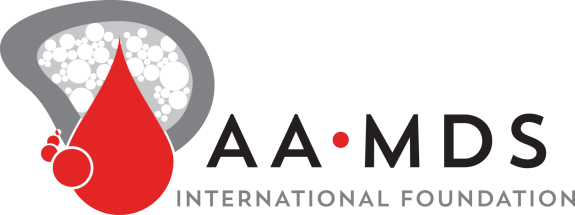Grants and Grant Recipients
Since 1989, AAMDSIF has provided research grants totaling in excess of $5.9 million to an international group of 107 researchers
The two-year grants have helped bring forth new insights into the causes and therapeutic approaches for these diseases. These grantee profiles present the grantees by year the awards were granted, and a summary of their grant-funded research projects.
Grant Year: 2017
Joseph Oved, MD
James D. Moreland Research Fund, Mary Pat Madden
Aplastic Anemia is a disease that results in the destruction of hematopoietic stem cells in the bone marrow by the immune system. Although the exact mechanism of this pathology is not fully understood, the prevailing model proposes that the immune system and specifically T cells are responsible for this destruction. Pediatric and adult aplastic anemia, while clinically similar in their presentation may in fact be representative of different subsets of a spectrum of aplastic anemia. Our group and others have shown that adult patients with aplastic anemia have a tendency to develop cell populations that are predisposed to myelodysplastic syndrome and leukemia. In the pediatric population however, we found that patients tend to develop cell populations that have mutations in certain genes (i...
Sergei Vatolin, PhD
Patricia and Vincent Geczik Legacy Fund
Medicines available to the patients with severe blood diseases like aplastic anemia (AA) and paroxysmal nocturnal hemoglobinuria (PNH) are very limited. The idea of improvement the quality of blood cells with small molecules may give a new opportunity to cure AA and hope to reverse PNH. Our proposal is based on discovery of drugs (TCC1 and TCC2) which improve performance of blood stem cells by increasing their life span. We hypothesize that the unique biological activity of these agents can already be used in clinic to treat AA and PNH by restoration the function of damaged/exhausted blood stem cells. Such effects may help to alleviate diseases and accelerate recovery of normal blood in patients with AA or PNH. The objective of this study is preclinical testing of the identified drugs to...
Grant Year: 2016
Akihide Yoshimi, MD, PhD
Shirley and James O’Brian Research Fund
Myelodysplastic syndromes (MDS) are a heterogeneous group of disorders characterized by inefficient blood production. MDS represents the most common cause of acquired bone marrow failure in adults and there are few effective therapies for the majority of MDS patients. In 2011, it was discovered that mutations in proteins encoding RNA splicing factors (SFs) are the most common class of mutations in patients with MDS and chronic myelomonocytic leukemia (CMML). Despite these discoveries, however, we do not yet fully understand why abnormal RNA splicing results in MDS nor do we have therapies that specifically target MDS cells bearing this common class of mutations. The goals of this proposal are two-fold: (1) to determine the efficacy of clinical-grade novel spliceosome inhibitors in...
Tushar Bhagat, PhD
Carol and Peter Stewart Fund in memory of Raymond Hodor
Myelodysplastic syndromes (MDS) are a heterogeneous set of clonal disorders characterized by ineffective blood cell development. These diseases are driven by many complex genetic and non-genetic changes. Recent findings have uncovered that alterations in the bone marrow microenvironment contribute to the disease. In our preliminary data, we have found that the beta-catenin pathway is activated in the bone marrow and in the blood of patients with MDS and this predicts a poor clinical outcome. We demonstrate that changes in the stroma increase beta-catenin in the MDS cells and can be targeted by new drugs. We will utilize mouse models, cells lines and patient samples to understand how the bone marrow environment is altered in patients and utilize newly developed beta-catenin pathway...
Alina Dulau Florea, MD
Patricia and Vincent Geczik Legacy Fund
Summary
Our study involves the analysis of normal and abnormal cells in the bone marrow of patients with Paroxysmal Nocturnal Hemoglobinuria (PNH). In this condition, due to a gene mutation, some bone marrow cells and their progeny in the blood lack an important cell surface component that functions as an anchor for other proteins, some of which attach to blood cells and protect them from destruction by complement, part our immune system. The result of this deficiency is a breakdown of red cells. If large quantities of red cells are destroyed, people become very tired, or have pain in the belly, head or when swallowing, or develop blood clots. The cause of the gene mutation is unknown. Some patients with other conditions, such as aplastic anemia (AA, a disease where marrow stops...
Kate MacNamara, PhD
Julia Malsin Research Fund
Bone marrow failure is the rare but devastating collapse of blood production, and if left untreated the disease is invariably fatal. Our current therapies are inadequate in the sense that they involve general immunosuppression or highly invasive treatments via bone marrow transplantation. In both genetic and acquired cases of bone marrow failure, excessive inflammation ultimately causes destruction of the stem cells required to maintain daily production of all blood cells. Inflammatory molecules such as interferon gamma (IFN-gamma) are known to contribute to pathology, yet exactly how stem cell function is compromised by these factors is not clear and remains an important question in understanding the pathogenesis of bone marrow failure.
We utilized a mouse model of bone marrow failure...
Grant Year: 2015
Jing Fang, MD, PhD
Michael Fernandes Research Fund
A major complication of myelodysplastic syndromes (MDS) is worsening cytopenias due to bone marrow failure. Novel therapeutic approaches are urgently needed for MDS, as current therapies have modest responses and many patients are not suitable candidates for bone marrow transplantation. Our preliminary study revealed a role of sequestosome 1/p62 in the pathogenesis and disease evolution of MDS. For this study, we will dissect the functional domains on p62 and associated signaling pathways that are necessary for the development and maintenance of MDS. Moreover, we propose to target p62-intacting complexes using a peptide approach as an attempt to target MDS clones and prevent disease evolution. This study will improve our understanding of MDS-associated bone marrow failure and may reveal...
Anastasios Karadimitris, MD, PhD
PNH Research and Support Foundation
Our proposed research addresses one of the main and unresolved issues in the biology of paroxysmal nocturnal hemoglobinuria (PNH) and idiopathic aplastic anemia (IAA). Both disorders are considered to have an autoimmune mechanism involving auto-reactive T cells targeting hematopoietic stem cells (HSC) leading to their profound depletion. It is widely documented that the pathogenesis of IAA and PNH overlap to a great extent, with up to 50% of patients with IAA developing a PNH clone or bonafide PNH and a subgroup of patients with PNH evolving into IAA. The proposed work has the potential to unravel novel cellular and molecular mechanisms that underpin HSC depletion in PNH and IAA, with wider implications for both the hematology and immunology scientific communities.
Katherine King, PhD
Liviya Anderson Research Fund
This AAMDSIF research grant will enable us to do basic and essential work on the effects of inflammatory signaling on bone marrow stem cells. We have known for some time that excessive inflammation can suppress bone marrow; now we are taking the next steps to find out how inflammation injures hematopoietic stem cells. We hope that our research will lead to novel ways to interrupt the development of aplastic anemia.
Shahram Kordasti, MD, PhD
Research is Hope Fund
Bone marrow failure syndromes are not only serious and debilitating diseases but they can also progress toward leukemia. Identifying the specific factors contributing into this malignant transition is extremely important. Our group focus in past few years has been the role of the immune system in bone marrow failure and we showed the importance of specific subtypes of immune cells in both pathogenesis and malignant transformation of these diseases. The AAMDSIF research grant will allow us to focus on differences in immune changes in aplastic anemia and paroxysmal nocturnal hemoglobinuria (PNH) and will enable us to utilize the state of the art technologies (such as multidimensional mass cytometry and high throughput DNA sequencing) to further understand the role of immune system in these...











